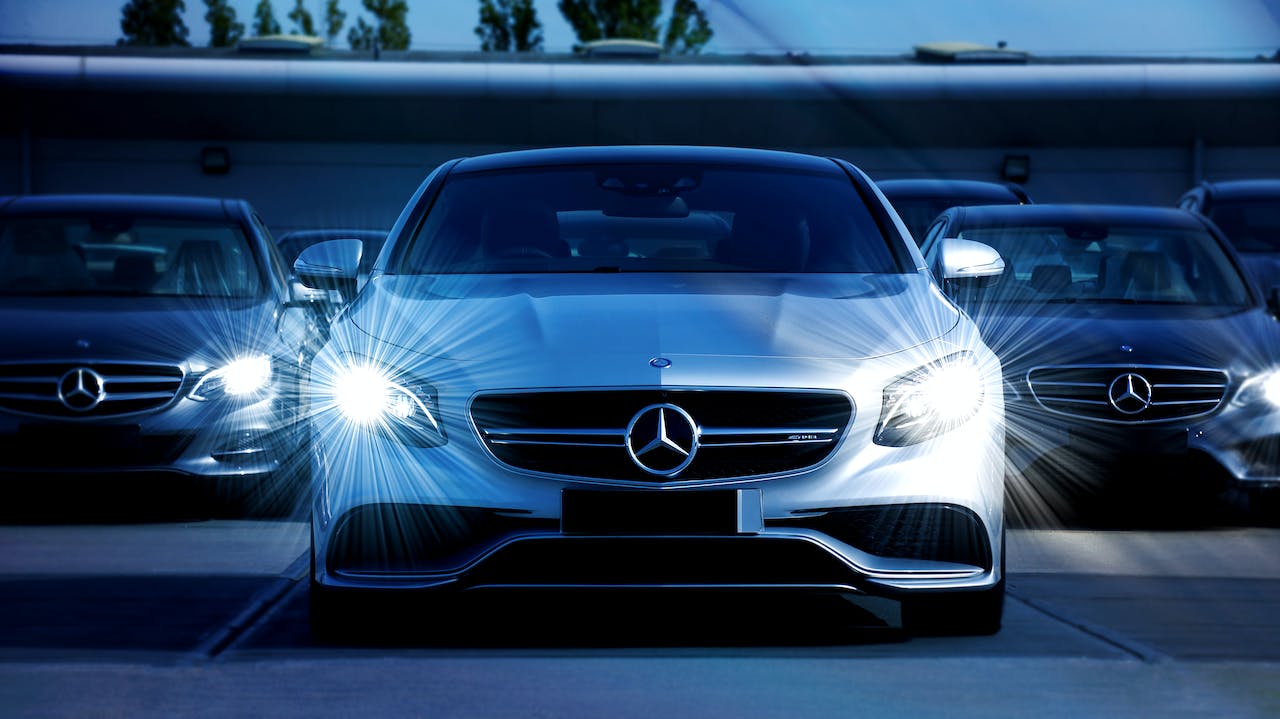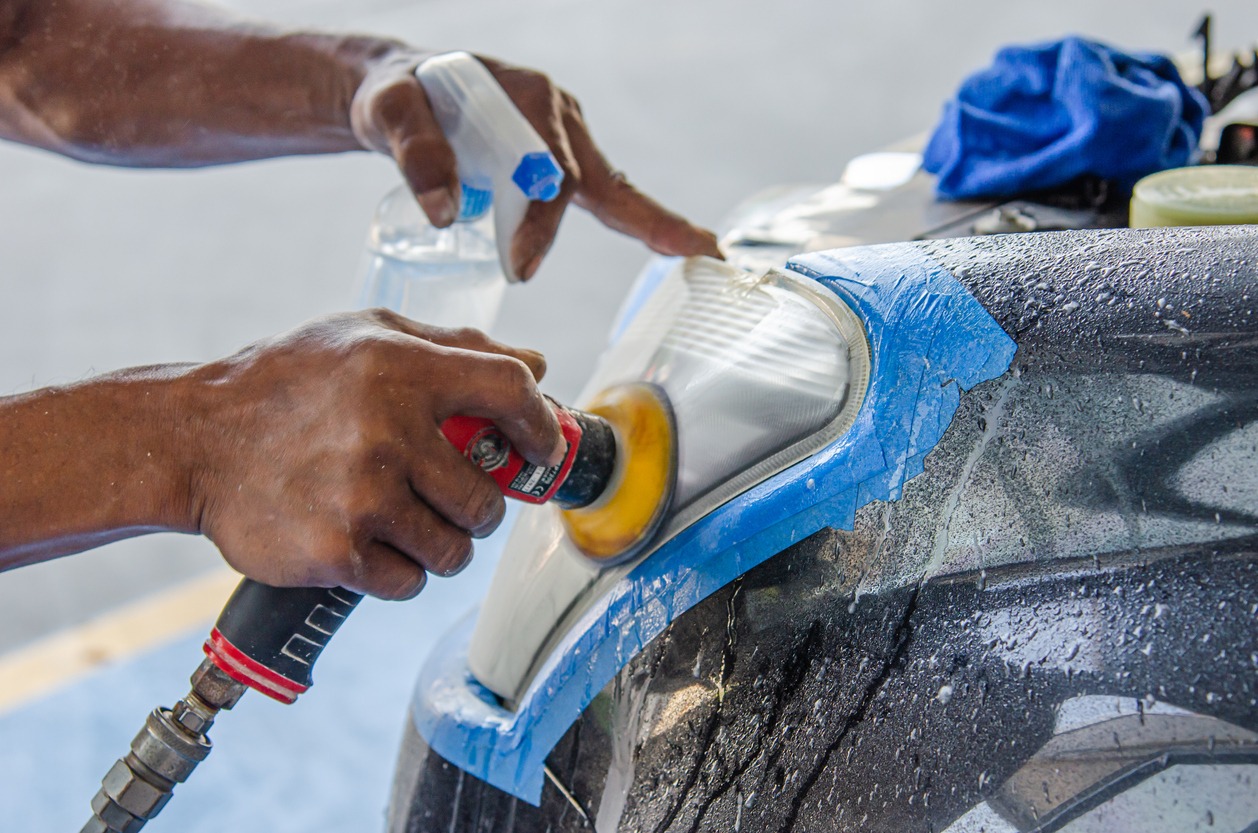Headlights are vital for safe driving, but over time, they can turn yellow and cloud. This yellowing is not just a cosmetic issue but a safety concern – reducing light output. In this concise guide, we reserve some secure methods to understand yellowing and protect them from the glass.
Reasons behind getting yellow faces
Headlights often turn yellow over time due to various factors. Understanding these can help in maintaining their clarity and effectiveness.
- Vulnerability of headlights – Headlights are usually made from polycarbonate plastic. This material, while durable, can be damaged by harsh weather, neglect, and pollutants.
- Environmental factors – Regular exposure to elements like sand and small rocks can scratch and wear down the headlight surface, and pollution can further etch and dull the plastic.
- Sun’s UV rays, combined with acid rain and harmful chemicals – These can degrade the polycarbonate, accelerating the yellowing process.
- Maintenance neglect – Maintenance, or the lack thereof, is another critical factor in headlight yellowing. Regular cleaning and upkeep play a pivotal role in preserving headlight clarity. Neglect in this area can lead to accumulation of dirt and grime, further exacerbated by high temperatures from standard halogen bulbs.
- Age and wear – Over time, the headlights naturally undergo wear and tear. As they age, the protective coating on the headlight surface can deteriorate, making them more susceptible to yellowing. This process is often accelerated in vehicles that are frequently used or have been on the road for many years.
- Use of Low-Quality Replacement Materials – When replacing or repairing headlights, using substandard or non-OEM (Original Equipment Manufacturer) materials can lead to quicker degradation. These materials may not have the same UV protection or durability as higher-quality options, resulting in faster yellowing and aging.
- Heat Emission from Bulbs – The type of bulb used in the headlight can also impact its coloration over time. Halogen bulbs, for instance, emit more heat compared to LED or HID bulbs. This continuous exposure to high temperatures can degrade the headlight lens material, contributing to the yellowing effect.
DIY Headlight Restoration
Headlight restoration kits offer an easy and affordable way to improve the appearance of your car’s headlights and taillights. While professional services can achieve quick results, they often come with a high price tag. Alternatively, you can opt for DIY methods that can be efficiently performed in your own garage. During the headlight restoration process, you can expect the following benefits:
- Minimal Effort Required – The process is straightforward and doesn’t require extensive effort or time.
- High-Quality Results – These kits are designed to deliver professional-looking outcomes.
- Effective Cleaning – They are capable of removing stubborn stains and buildup from the glass of the headlights.
Choosing to restore headlights with a kit is generally much more cost-effective compared to replacing them entirely. This is particularly true for expensive cars, where the cost of professional headlight cleaning can be ten times higher. The restoration process is suitable for all types of vehicles, making it a universally accessible solution.
Budget-Friendly Washing Options
Cleaning headlights doesn’t have to be expensive. Start by using a basic glass cleaner and a microfiber towel to gently wipe away dirt. However, avoid using ammonia-based products as they can cause more harm. If you encounter tough stains or dirt that won’t come off easily, you can use 2000 grit sandpaper for a more thorough cleaning. This sanding should be done gently and patiently. For a basic cleaning process, you’ll need:
- Detergent water
- Latex gloves
- Microfiber towels
- Sand paper
- Polishing wax
Experiment with different brands of headlight cleaners that come with a buffing pad. This helps in removing stubborn external debris from the plastic lens. In addition to sanding, using a buffer with a rubbing compound can be effective. This method is especially useful for removing any defective coating, revealing the underlying issues more clearly.
Sealing the headlights after cleaning is an important step. Choose a high-quality headlight sealer; a clear sealer is usually preferable to a yellow one. This helps protect the lens and extend its lifespan.
Preventive Measures
Cleaning and Maintenance
In preventing headlight yellowing, regular cleaning and maintenance are crucial. Utilizing recommended cleaning products like specialized headlight cleaners and following effective techniques such as gentle circular motions with a microfiber cloth, can significantly reduce the risk of yellowing. It is important to make this a routine practice, as consistent care can prevent buildup of damaging elements.
Application of protective coatings and sealants
These products, such as clear coats and specialized headlight sealants, provide a barrier against environmental factors and UV rays. The application process typically involves cleaning the headlight surface thoroughly before evenly applying the coating. The frequency of reapplication depends on the product used, but it is generally recommended to reapply every few months to ensure ongoing protection.
Safeguarding headlights from UV damage is crucial. UV-resistant coatings are beneficial as they specifically block harmful UV rays, significantly reducing the rate of yellowing and degradation. Besides coatings, other methods include using UV protection films and ensuring your car is parked in shaded areas as much as possible. These combined efforts in UV protection, along with regular cleaning and the use of protective coatings, form a comprehensive approach to preventing headlight yellowing.
Conclusion
Adhere sincerely to the regulations that prevent yellowing of headlights, taillights, and other types of reflector lights. The natural process must be mandatorily prohibited once you remain kitted. It is never complicated to lunar the plastic headlights using the professional kits. Remove all of the hazy effects caused by glass materials. Besides, if the automobile is brand-new, attempt to wash it every day.




